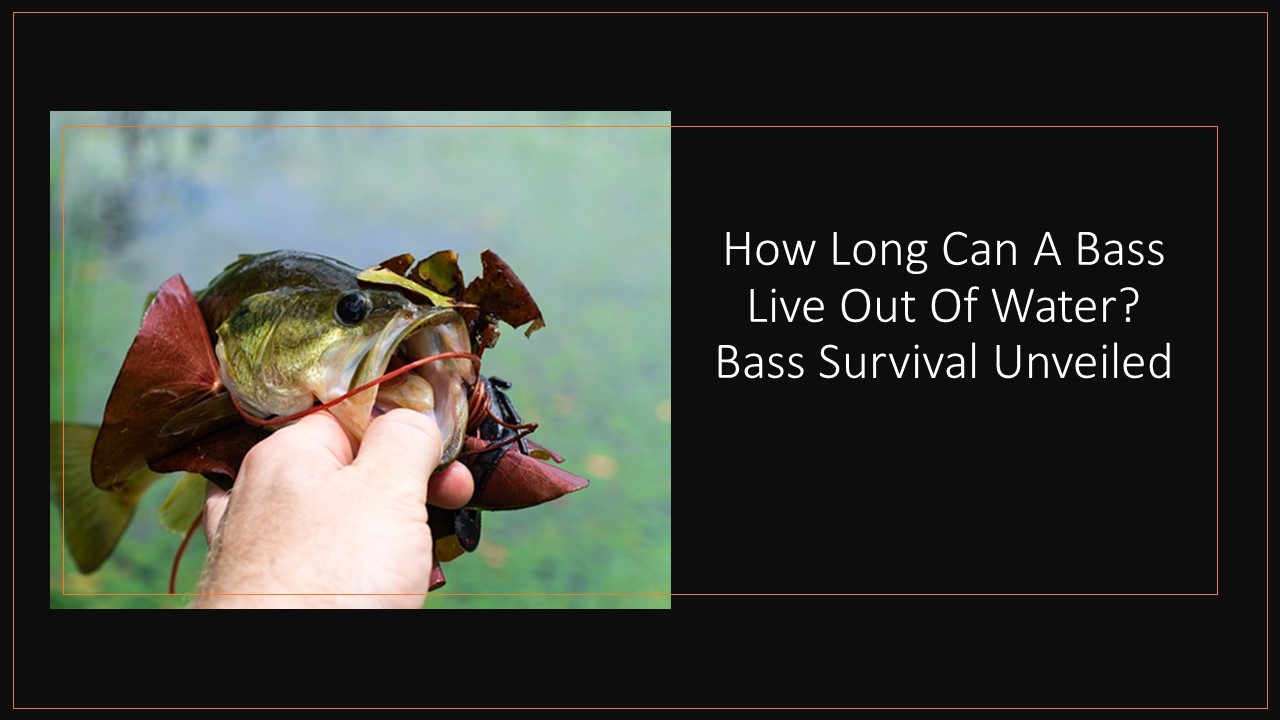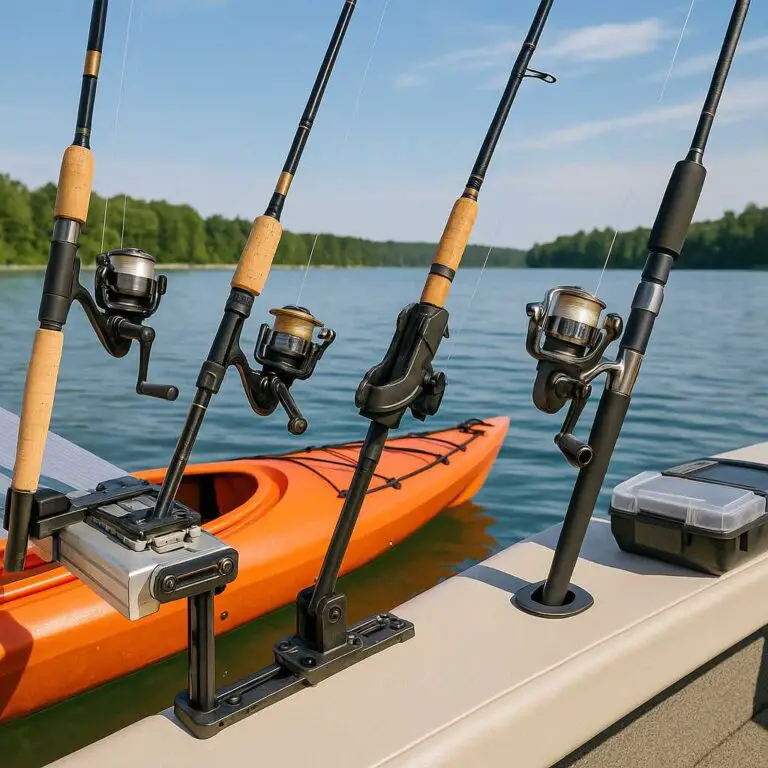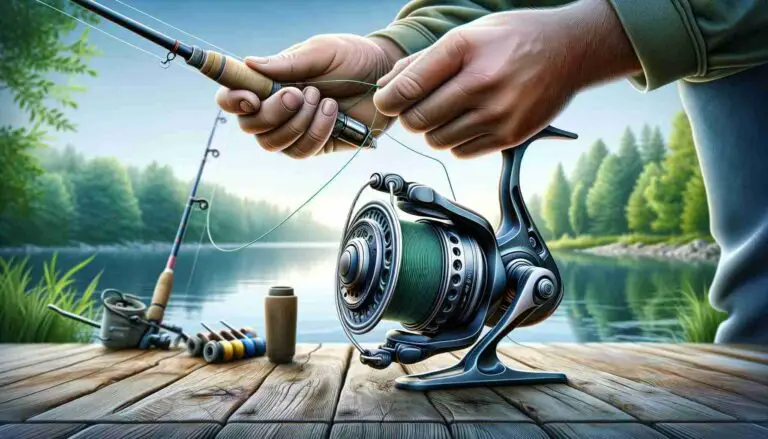Have you ever wondered how long can a bass live out of water? As someone who’s always been fascinated by these incredible aquatic athletes, I’ve often pondered this question myself. Whether you’re an angler or simply a nature lover, understanding the survival skills of bass can deepen our appreciation for these remarkable creatures.
A bass can typically survive out of water for a few minutes to several hours. The exact survival time depends on factors such as the bass’s size, age, water temperature, humidity, stress levels, and handling techniques.
But this is just a piece of the puzzle. Keep reading!
Understanding the Biology of Bass:
Before I dive into the specifics of how long bass can survive out of water, let’s take a moment to appreciate the biology of these fascinating creatures. Bass, including largemouth and smallmouth varieties, are renowned for their popularity among anglers and their impressive athletic abilities.
Bass have evolved a set of unique adaptations that make them formidable predators in their watery habitat. One of the key features of bass is their gills, which allow them to extract oxygen from water. These specialized respiratory organs enable bass to breathe efficiently underwater, extracting oxygen from the dissolved oxygen content in the surrounding water.
Another remarkable adaptation in bass is their swim bladder. This gas-filled organ helps them control their buoyancy. By adjusting the amount of gas in the swim bladder, bass can ascend or descend in the water column with precision. This ability is crucial for their hunting and survival, as it allows them to navigate various depths and ambush their prey effectively.
Furthermore, bass possess a streamlined body shape that contributes to their agility and speed in the water. Their muscular fins and powerful tail enable them to maneuver swiftly, making them formidable predators capable of chasing down their prey with impressive bursts of speed.
The senses of bass also play a vital role in their survival. They have well-developed vision, allowing them to spot prey and detect changes in their environment. Their lateral line system, a series of sensory receptors along the sides of their bodies, helps them detect vibrations and movements in the water, providing valuable information about potential threats or prey nearby.
Understanding these adaptations sets the stage for exploring how bass fare when they find themselves out of the water, which I’ll discuss in the following sections.
The Time Limit for Bass out of Water
Now, let’s dive into the intriguing question of how long bass can survive when they are out of their natural aquatic environment. Several factors come into play when determining the survival time of bass outside of water, and understanding these factors can help us gain insight into their remarkable abilities to adapt.
- Size and Age of the Bass: The size and age of a bass can significantly impact its ability to survive out of water. Generally, larger and more mature bass have a higher chance of survival compared to their younger counterparts. This is because larger bass have developed stronger physiological systems and can withstand the stresses associated with being out of water for longer periods.
- Water Temperature and Humidity: Water temperature and humidity play crucial roles in a bass’s ability to survive out of water. Bass are cold-blooded creatures, meaning their body temperature is influenced by their environment. In warmer conditions, a bass may experience increased stress and physiological strain when removed from water. Conversely, in cooler temperatures, bass may have a slightly higher chance of survival outside of water.
- Stress Levels and Handling Techniques: When a bass is caught by an angler and subsequently released, the stress levels it experiences can affect its survival. The handling techniques used by anglers also play a crucial role. Rough handling, mishandling, or prolonged air exposure can significantly increase stress and reduce a bass’s chances of survival. It’s important for anglers to handle bass with care, minimizing the time they spend out of water and ensuring a gentle release.
The specific time limit for a bass to survive out of water can vary. On average, an adult bass can typically survive for a few minutes to several hours, depending on the factors mentioned above. However, it’s important to note that every bass is unique, and there may be exceptional cases where individuals can survive longer outside of water.
Survival Strategies for Bass out of Water
When bass find themselves out of their natural watery habitat, they employ several survival strategies to increase their chances of making it back to their aquatic domain. Understanding these strategies can help us as anglers and nature enthusiasts ensure the well-being and survival of these magnificent fish during catch-and-release scenarios. Let’s explore some of the key survival strategies bass utilize when out of water.
- Physiological Changes: When bass are out of water, they undergo various physiological changes to adapt to their new environment. One significant change is a decrease in oxygen consumption and metabolic rate. By reducing their energy expenditure, bass can conserve oxygen and energy during their time away from water. This adaptation allows them to sustain their vital functions with limited resources until they can be returned to the water.
- Stress Response: Being out of water is undoubtedly a stressful experience for bass. In response to this stress, they activate their stress response mechanisms and release stress hormones. These hormones help prepare their bodies for the challenging conditions and aid in their survival. However, prolonged exposure to stress can be detrimental, so it’s crucial to minimize the time bass spend out of water to mitigate stress levels.
To maximize the survival of bass during catch-and-release scenarios, here are some practical tips:
- Gentle Handling Techniques: When handling bass, it’s important to be gentle and minimize the stress they experience. Wetting your hands before touching them can help reduce damage to their delicate protective slime layer. Avoid squeezing or applying excessive pressure on their bodies, as this can harm their internal organs.
- Proper Fishing Equipment: Using appropriate fishing gear is crucial for minimizing harm to bass during the catch-and-release process. Ensure that your hooks are barbless or have well-designed barbs that can be easily removed without causing additional injury. Using a rubber or knotless landing net can also help reduce stress and damage to the fish’s fins and scales.
- Swift Release: The goal is to get the bass back into the water as quickly as possible. Minimize the time they spend out of water by preparing for their release in advance. Have your tools ready, such as pliers for hook removal, and avoid unnecessary delays or excessive handling. Place the bass gently back into the water, supporting it until it swims away on its own.
In the next section, I’ll explore real-life examples and exceptional cases of bass surviving unusual circumstances, showcasing their resilience and natural instincts.
Real-Life Examples and Exceptional Cases
Real-life examples and exceptional cases of bass surviving unusual circumstances truly demonstrate their resilience and ability to adapt to challenging situations. These stories highlight the remarkable survival instincts of these magnificent fish. Let’s dive into a couple of awe-inspiring examples:
- Bass in Unusual Habitats: Bass have been found in unexpected locations, demonstrating their adaptability. Some bass have been discovered in waters with low oxygen levels or even temporarily stranded in small, isolated pools during periods of drought. These situations push bass to their limits, but they can exhibit incredible resourcefulness and survival skills. It’s fascinating to witness how bass can navigate these unconventional habitats until conditions improve.
- Extended Survival Out of Water: Occasionally, there are extraordinary cases where bass survive outside of water for an extended period. While these occurrences are rare, they demonstrate the tenacity of these fish. There have been instances where anglers unintentionally left bass in live wells or buckets for several hours, only to find them still alive and kicking when rediscovered. While such situations are not ideal, they remind us of the remarkable resilience and adaptability of bass.
These real-life examples and exceptional cases emphasize the importance of understanding bass survival abilities. While they showcase the resilience of these fish, it’s essential to remember that they are still best suited to their aquatic environment. As responsible anglers and stewards of nature, we must strive to minimize the stress and harm to bass, ensuring their safe return to their underwater homes.
Next, I will explore our role in preserving the well-being of these remarkable fish and their habitats.
Conservation and Ethical Considerations
Conservation and ethical considerations play a vital role in ensuring the long-term well-being of bass populations and their habitats. As anglers and nature enthusiasts, we have a responsibility to protect these magnificent fish and the ecosystems they rely on. Let’s delve into the importance of conservation efforts and ethical considerations when it comes to bass fishing.
- Threats to Bass Populations: Bass populations face various threats that can impact their overall health and abundance. Overfishing is a significant concern, as excessive harvest can lead to the depletion of bass populations, disrupting the delicate balance of ecosystems. Habitat destruction, such as pollution, sedimentation, and the loss of critical spawning areas, also poses a threat to bass populations. It’s crucial to recognize and address these threats to ensure the long-term sustainability of bass populations.
- Promoting Catch-and-Release Practices: Implementing catch-and-release practices is an effective way to conserve bass populations. By releasing fish back into the water unharmed, we allow them to continue reproducing and contributing to the population. When practicing catch-and-release, it’s essential to handle bass with care, minimize stress, and release them swiftly. This ethical approach ensures the survival and well-being of the fish.
- Supporting Sustainable Fishing Regulations: Adhering to fishing regulations is crucial for the conservation of bass populations. Regulations regarding size limits, bag limits, and closed seasons are implemented to protect bass during sensitive life stages, such as spawning, and to maintain healthy population levels. As responsible anglers, it’s important to stay informed about fishing regulations, comply with them, and support sustainable management practices.
- Engaging in Conservation Initiatives: Participating in conservation initiatives and organizations dedicated to the protection of bass and their habitats is a proactive way to contribute to their well-being. Supporting local conservation groups, volunteering for habitat restoration projects, and participating in citizen science programs can have a positive impact on bass populations and the ecosystems they inhabit.
Conclusion
Understanding the survival skills of bass when out of water provides us with valuable insights into their resilience and adaptability. The survival time of a bass out of water depends on various factors. On average, an adult bass can survive for a few minutes to several hours. Size, age, water temperature, humidity, stress levels, and handling techniques all play a role.
Swift release, gentle handling, and minimizing stress can maximize their chances of survival. It’s crucial to return bass to the water as quickly as possible to ensure their well-being.
By practicing gentle handling techniques, minimizing stress, and ensuring swift releases, we can enhance their chances of survival during catch-and-release scenarios. Additionally, embracing conservation initiatives and adhering to sustainable fishing regulations contributes to the long-term well-being of bass populations and their habitats.
So, let’s continue to appreciate the wonders of bass, while also taking responsibility for their conservation. Together, we can ensure that these aquatic athletes thrive for years to come, enriching our fishing experiences and reminding us of the incredible power of nature. Happy fishing and conservation efforts!








